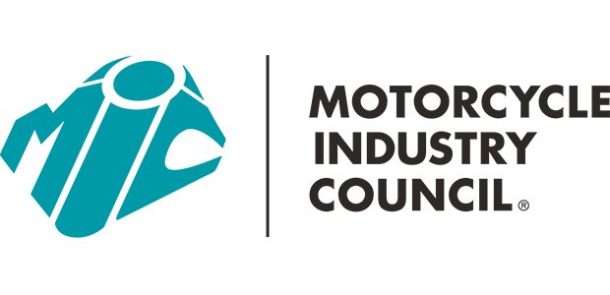Survey: E-commerce growing despite economy
By Neil Pascale
Editor
The industry’s e-commerce results largely followed the rest of the U.S. retail sector in 2008 by showing more resiliency to the economic downturn than retail sales as a whole.
That was the conclusion of a national survey of 150 powersports dealerships conducted for Powersports Business. The survey found 45 percent of dealers were either “up slightly” or “up substantially” in their 2008 online sales compared to 2007. Less than one in five dealers reported declining online revenue, according to the survey that was done by Irwin Broh & Associates, an Illinois-based marketing research firm.
A similar outcome was reported throughout the U.S. retail sector. Total U.S. e-commerce sales of $133.6 billion in 2008 represented a
4.6 percent increase over the prior year, according to the U.S. Census Bureau. Total retail sales, however, dropped less than 1 percent for the same time period.
E-commerce sales are not expected to stall even in this unstable retail environment. Earlier this year, Forrester Research Inc., an independent research company, forecast U.S. online retail sales in 2009 would grow by 11 percent.
Dave Hogge, executive vice president for Web site provider 50 Below, believes that trend of elevated online sales could certainly extend into the powersports arena. Hogge attributes that partly due to the fact that more consumers feel comfortable with purchasing online as well as the fact that dealership Web sites are improving.
“The advancements and the tools that they have been given make a big difference,” Hogge said of dealers.
Those enhanced functions have allowed the industry to catch up in many ways with other retail sectors.
“That’s been a challenge with powersports dealers is the experience a customer gets when they go to Best Buy.com or Sears.com in the past hasn’t been anything like the experience when they went to a powersports dealer site,” Hogge said. “And that made a huge difference.”
Powersports dealers are certainly noticing the online migration. Dealers on average said 60 percent of their new unit customers have researched vehicles before coming into a dealership.
“I’m thoroughly convinced that your Internet, your Web site is your first door of the dealership that customers come through,” said Curtis Sloan, executive vice president of Sloan’s Supercenter in Murfreesboro, Tenn. “I really do believe that. It used to be your Yellow Page ad. But times have changed.”
Craig Cervenka, director of marketing for Web site provider PowerSports Network, believes that 60 percent number is accurate, noting it could definitely be higher in urban areas and could depend on the vehicle brand.
Although online shopping has intensified, dealers aren’t always seeing the potential extension of that: an increase in online sales leads for new units. Only slightly more than one-third of dealers said their monthly online sales leads have increased over the prior year. Another
22 percent said their monthly sales leads have actually declined over the past year.
Why haven’t online sales leads progressed in a more dramatic fashion? Cervenka of PowerSports Network notes there could be several factors at work.
“The novelty factor may be wearing off a little bit,” he said of online sales leads, “or maybe the customer realizes they’re going to get faster action by coming into the store or calling on the phone. We’re probably not all perfect to respond to our online leads.”
Cervenka also notes it’s probable that the overall economic downturn could be playing a role.
“If we know our unit sales are approximately down 20 percent, then it probably makes sense that everything is down 20 percent: foot traffic, phone calls, sales leads,” he said. “The other thing we don’t have going for us this year that we had last year is we had a lot of new customers because of the fuel prices. Those people last year were very prone to send in a request online vs. showing up at a store.”
Hogge of 50 Below notes the lack of a huge growth in sales leads could be the result of most consumers starting their online shopping at an OEM Web site, rather than the dealer’s.
“As we increase the experience and make the product better, the customers will start gravitating more toward the dealer sites and they’ll start getting the information there,” he said.
Dealers said on average they’re generating
24 sales leads per month for new unit customers. Sloan of the Tennessee dealership notes such online leads are beginning to be the most prized leads in his store.
“Some of our guys actually prefer a Web lead over a phone call because with a Web lead you already have the name, the phone number, the e-mail, what they’re interested in. With the phone call, you have to be skilled enough to drag all that out of them. The really savvy salespeople recognize the value of the Web lead.”
Part of the survey also examined what dealers are selling online. Breaking it up by segment, dealers on average said:
New unit sales represented 30 percent of their online sales;
Preowned units account for 25 percent of their online sales;
Parts and accessories are 31 percent of their online sales and the remaining 14 percent came from apparel sales.
Those numbers are largely similar to the 2007 dealership e-commerce survey conducted for Powersports Business.
A growth in online sales was seen in different-sized dealerships. Stores that had revenue of less than $3 million in 2008 made up 36 percent of the dealerships that reported a growth in online sales last year. Stores with a revenue of $3 million-$5 million in 2008 also made up 36 percent of the stores that saw e-commerce growth. Dealerships that made more than
$5 million last year represented 28 percent of the stores that saw online sales growth in 2008.




